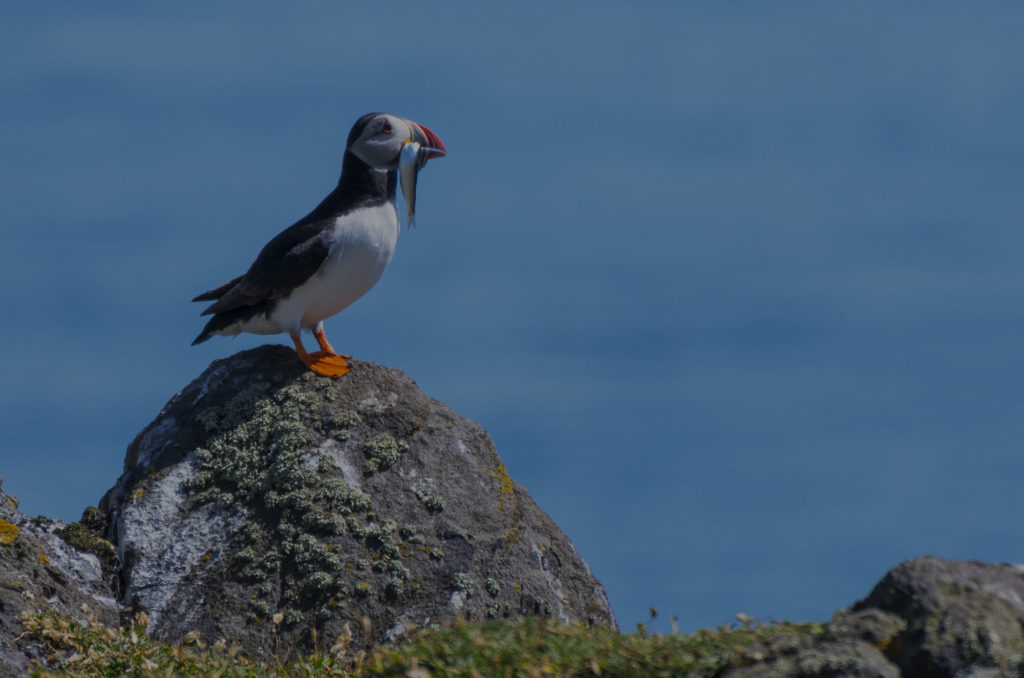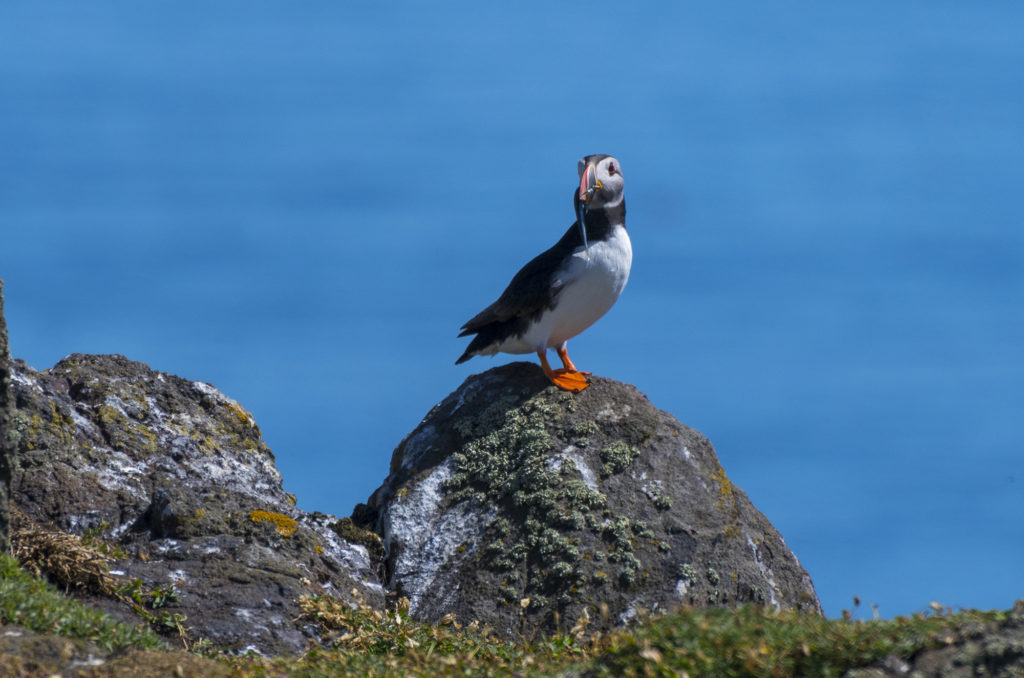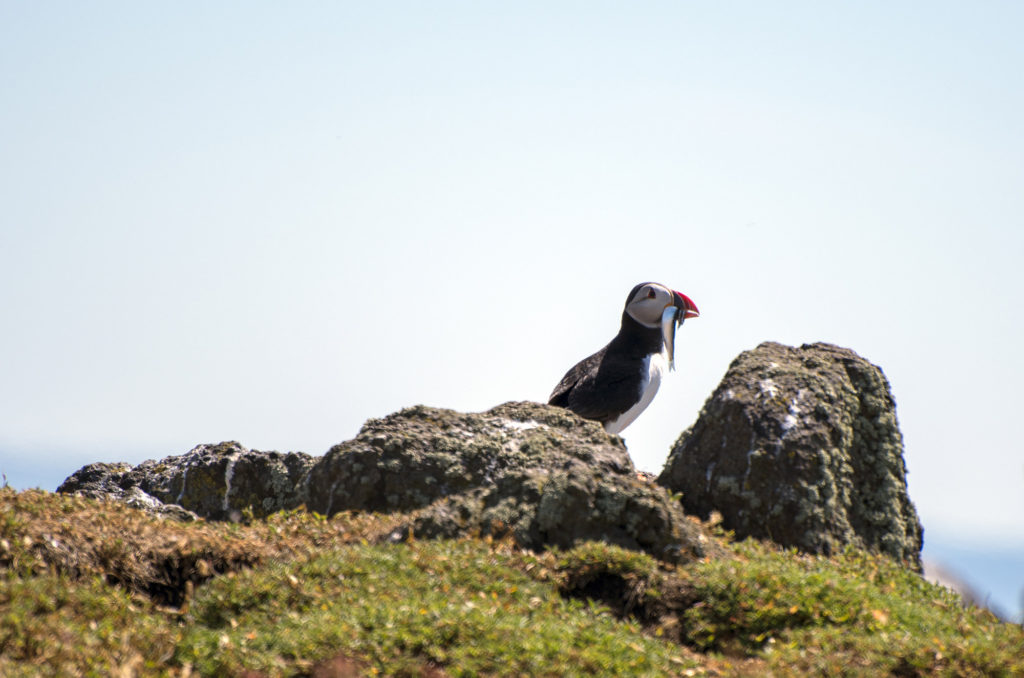In June 2018 we had a short break in the East Neuk of Fife and took a boat trip to the Isle of May. I knew it was a haven for seabirds, but I was unprepared for the amount, and variety, of wildlife I saw.
As the May Princess approached the island, we saw a puffin land occasionally in the water near the boat. I excitedly pointed each one out to my partner as though they were rarities. When we landed on the island I discovered that the whole place is ‘hoaching’ (as we say in Glasgow) with them!
These busy birds filled the sky as they rushed between the sea and their burrows, their bright orange feet splayed comically as they came into land. I know the danger of assigning human traits and values to wildlife, but it’s impossible to watch puffins and not be charmed by their antics. Their wonderfully expressive faces and colourful features are also very photogenic.

This explains why the RSPB is using our desire to photograph these birds to understand why they are threatened with global extinction. They are looking for people to become part of their Project Puffin team of ‘Puffarazzi’ by sending them photos of puffins with food in their bills. This citizen science project will help them discover how puffin prey has changed over time and, hopefully, work out what we can do to save this amazing species.

In his fantastic book, The Seabird’s Cry, Adam Nicolson outlines the horrifying pressures that seabirds face. He notes that: “Although many uncertainties lie ahead, what is happening is not complicated. Puffins are expensive to maintain and will die if they do not eat in three days”. Climate change, lack of the right food and longline fishing are just a few of the issues creating problems for many species. With puffin numbers estimated to drop by 50-80 per cent over the next sixty-five years, we must understand as much as possible about the specific issues they are facing. I am therefore keen to contribute to the RSPB’s research in any way I can.
On this page are the photos I submitted to Project Puffin from our trip to the Isle of May. The weather was baking hot with unbroken sunshine. This would be nice for a day on the beach, but not ideal for wildlife photography. The light was bright and harsh, meaning that avoiding blown-out highlights on white feathers was difficult. I hadn’t photographed wildlife in these conditions before. This was the first time I’d seen heat haze appearing on my images, making them all look slightly blurry. I’ve heard of professional photographers cancelling their plans when the only available boat trip is when the sun is doing its worst. Unfortunately, I’m a time-restricted amateur wildlife photographer with a day job to get back to; we sailed then or not at all.

I was still thrilled to be there and was determined to make the most of the opportunity. This meant treading carefully on the paths around the island, to try and get the closest view of the puffins without disturbing them. I also sat on the edge of some vertigo-inducing cliff-edges to get these shots. I couldn’t stay long in one spot, so I shot from a distance rather than venturing nearer to the colony and taking the time needed to allow the birds to become used to my presence. I know I could achieve better shots on a quieter, cooler day, but I’m pleased with these images under the circumstances. I hope I will get another opportunity to photograph puffins and other seabirds on the Isle of May. It is a breathtakingly beautiful and dynamic place.
The puffins and their pufflings will be heading out to the open sea very soon. I hope many will return next year. In the meantime, we should try to help organisations like the RSPB that are working to ensure that they keep coming back.

